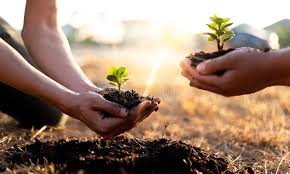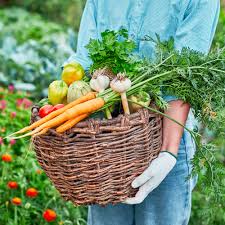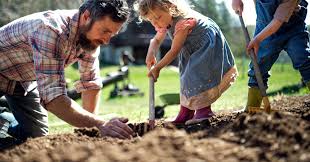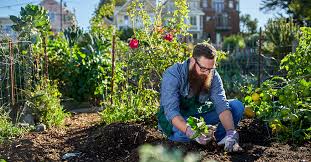Greening the Smallest Spaces:

Small space gardening is all about bringing greenery into even the tiniest corners of your home. Whether you’re growing vegetables, fruits, herbs, or flowers, it’s a wonderful way to make the most of limited space. In fact, this kind of gardening has become especially popular among city residents, apartment dwellers, and anyone with little or no outdoor area.
As urban living continues to grow, more and more people are searching for creative and compact ways to stay connected to nature. Fortunately, with a bit of smart planning, a few simple tools, and a touch of creativity, even a small balcony, windowsill, or kitchen corner can be turned into a thriving mini-garden.
More importantly, small space gardening isn’t just a fun and rewarding hobby it’s also a meaningful step toward a more eco-friendly lifestyle. By growing your own food, even in small amounts, you can reduce store visits, lower food miles, and help protect the environment.
Additionally, these tiny gardens can improve air quality, help keep your space cooler, and add natural beauty to crowded urban settings. They also create a safe haven for helpful pollinators like bees and butterflies. What’s more, the simple act of caring for plants can bring a deep sense of peace, joy, and personal satisfaction to your everyday life.
All things considered, small space gardening proves that you don’t need a big backyard to make a difference. With just a little care and imagination, any space, no matter how small, can truly come to life.
Benefits of Small Space Gardening:
Small space gardening offers numerous benefits—it promotes sustainability, reduces stress, and improves air quality. It allows urban dwellers to grow fresh herbs, fruits, and vegetables right at home. Moreover, it enhances creativity, saves money, supports biodiversity, and brings nature indoors, creating a peaceful and productive environment in limited spaces. Examples:
1. Maximizes Use of Available Space
It allows you to make the most of every inch, whether it’s a balcony railing, rooftop edge, stairwell corner, or kitchen window.
2. Promotes Sustainable Living
By growing your own herbs, vegetables, or fruits, you contribute to food sustainability and reduce your carbon footprint.
3. Enhances Mental Well-being
Numerous studies show that small space gardening helps reduce stress, anxiety, and depression. The connection with nature—even in miniature—is therapeutic.
4. Improves Indoor Air Quality
Indoor plants like spider plants, peace lilies, and snake plants purify air by removing toxins and adding oxygen.
5. Budget-Friendly Food Source
Growing basic kitchen herbs and vegetables saves money in the long run while providing fresher, healthier options.
Planning and Smart Techniques for Small Space Gardening:
Before jumping into small space gardening, it’s important to do a little planning first. Look Around and Know Your space, and start by checking out where you can set up your garden. whether its A balcony, A rooftop or A window ledge. Then think about a few important things:
- Sunlight: How many hours of direct sunlight does the space get?
- Weight: Can the area handle the weight of pots, especially for rooftops and balconies?
- Ease of access: Can you easily reach your plants to water, trim, or pick them?
Once you understand your space, you’re ready to make the most of it with smart, space-saving ideas.
Here are some great ways to get started:
1. Container Gardening
This is one of the easiest and most popular methods in small space gardening. As long as they have a hole at the bottom for water to drain, you’re good to go! You can use:Pots, Buckets, Hanging baskets,Old crates. and What you can grow:
- Herbs like basil, mint, and coriander love small pots.
- Vegetables like tomatoes, chillies, and lettuce do well in deeper tubs or containers.
2. Vertical Gardening
No floor space? No problem! Go up instead of out. Vertical gardening means using your walls or railings to grow plants.
- Wall planters
- Climbing frames (trellises) for plants like beans
- Hanging pots or baskets
- Tiered shelves or stands for multiple levels of plants
This way, you grow more plants without using up your floor.
3. Window Boxes
Got a sunny window? Don’t waste it. Attach a sturdy box to your window ledge and grow small plants there. They’re great for:
- Herbs you can grab while cooking
- Flowering plants like petunias and nasturtiums that add color and joy
4. Hydroponic Gardening
If you don’t have soil or outdoor space, try hydroponics. This method uses nutrient-rich water instead of soil to grow plants. Hydroponic kits are now available for homes and are perfect for growing leafy greens and herbs indoors.
5. Hanging Gardens
Don’t forget the ceiling! You can hang pots using and this adds greenery from above, saves space, and looks beautiful too. These clever techniques make small space gardening fun, easy, and super satisfying even if you only have a tiny bit of room.
- Macramé hangers
- Baskets hooked to balcony railings
- Recycled containers hanging by ropes
Choosing the Right Plants and which are the Best Plants for Small Space:

One of the most important aspects of small space gardening is choosing the right plants. Go for species that: Have shallow root systems, Require less sunlight.
Vegetables:
- Cherry tomatoes
- Peppers
- Lettuce
- Spinach
- Radishes
Herbs:
- Mint
- Basil
- Parsley
- Chives
- Thyme
Fruits:
- Strawberries
- Dwarf lemons
- Figs (in large containers)
Maintenance Tips for Gardening in small spaces:
Maintaining a garden in a confined area requires regular care. Here are some key maintenance tips for small space gardening:
1. Watering Smartly
Avoid overwatering. Check the soil moisture regularly. Use a watering can with a narrow spout for better control.
2. Sunlight and Airflow
Rearrange plants occasionally to ensure equal sunlight exposure. Avoid overcrowding to maintain airflow and prevent mold.
3. Soil and Fertilization
Use high-quality potting mix and organic compost. Because container soil depletes nutrients quickly, feed plants regularly with diluted organic fertilizer.
4. Pruning and Harvesting
Regularly trim dead leaves and flowers to encourage growth. Harvest herbs frequently to keep them bushy and productive.
Challenges faced in Small Space Gardening and How to Overcome Them:
Challenges faced like:
1. Limited Light
If your space lacks sufficient sunlight, choose shade-tolerant plants like ferns, mint, or lettuce. Use grow lights as a supplement.
2. Pest Management
Because you’re gardening close to living spaces, avoid harsh chemicals. Use neem oil, garlic spray, or companion planting as natural solutions.
3. Drainage Issues
Ensure containers have drainage holes. Use pebbles at the bottom of pots and don’t let water stagnate.
4. Temperature Extremes
Extreme sun or wind can stress plants. Use shade cloths or windbreakers to protect sensitive plants.
Kids Involvment in Gardening:

Including children in horticulture is not only a fun activity but also an educational way to connect them to nature. Moreover, it teaches responsibility, patience, and the joy of nurturing life. To begin with, children can start with simple tasks such as watering plants, planting seeds, or choosing herbs. Additionally, horticulture increases their curiosity about how food grows and encourages healthy eating habits. For families living in cities, small space gardening—such as using containers or vertical gardens—is ideal for children. As a result, watching their plants grow gives them a sense of achievement and builds confidence. In addition, it offers a screen-free activity that promotes mindfulness and creativity, while also strengthening family bonds.
How Small Space Gardening Helps the Environment:
Small space gardening may seem modest; however, its environmental benefits are truly significant. By growing plants in balconies, rooftops, or windowsills, urban dwellers actively contribute to greener, more livable cities. In particular, these small gardens help reduce air pollution by absorbing carbon dioxide and releasing oxygen. Furthermore, they provide essential habitats for pollinators like bees and butterflies, which are crucial for maintaining local biodiversity.
In addition, using compost and organic practices in small space gardening reduces kitchen waste and minimizes reliance on harmful chemicals. Not only that, but growing food at home also cuts down on transportation emissions linked to store-bought produce. Equally important, vertical and container gardening promotes efficient use of limited water and space. Although small in scale, these gardens collectively help lower the urban heat island effect, naturally cooling down city environments. All in all, small space gardening empowers individuals to make eco-friendly choices—proving that even small steps can lead to meaningful environmental change.
Final Thoughts on Gardening in small space:
In conclusion, small space gardening is far more than just a practical response to limited square footage it is a mindful and enriching lifestyle. Not only does it allow you to cultivate plants, but it also fosters wellness, sparks creativity, and promotes sustainable living.
Moreover, with just a bit of time and attention, anyone, regardless of their location, can experience the joy and benefits of gardening. Whether you reside in a bustling city apartment, a cozy hostel room, or a compact tiny house, the message remains the same where there’s a small space, there’s always room to grow.

Therefore, embrace the art of small space gardening today. Let your little green corner not only brighten your home but also make a lasting difference for yourself and for the planet.
